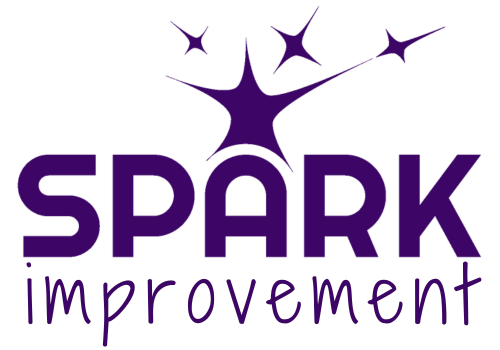DOWNLOADS
How to Help
A resource guide for Improvement Practitioners, Facilitators and Leaders, to help people think clearly, overcome obstacles, and embrace change.
SPARK Change Curve
This curve describes the emotions that we all go through when we experience change.
This is all entirely normal and is to be expected. Some people’s curve will be deeper, some shallower.
The crucial thing is to look around you, at your employees, your co-workers and your friends, and help them when you see them slipping down the slope of resistance or when they are sat down in the valley of despair.
Simple Icons to show emotions
This set of simple icons can be used to encourage people to share their feelings. Most of us are used to using emojis in our personal communications, I believe we can also use them strategically in our work environments too.
For example, if I am process mapping with a team, I will ask the team to indicate how they feel at each step of the process. I show them how to draw these very simple emojis and have them add them to each step. This helps to make it safe to talk about feelings, and helps to normalise talking about emotions. This could be incredibly important if any of the people involved are one of those 1 in 5 people who suffers from a mental health issue. If someone is in a crisis, the most important thing for their survival is to talk about it. To be ABLE to talk about it.
SPARK What is Kata?
This image is my interpretation of what Mike Rother discovered at Toyota during his 5 years of research (Toyota Kata, Mike Rother 2010).
For more info, click here for blog.
The 5 Steps of the Improvement Kata
The Improvement Kata is a five-step model which helps us to think and act scientifically. It encourages us to take small, intentional steps towards our goal or challenge.
This image shows my interpretation of this model and is based on the work of Mike Rother in the Toyota Kata Practice Guide, 2018.
For more info (and to learn why I teach this as 5 steps, not 4) click here for blog.
SPARK Experimenting Record
The Experimenting Record is a document used by a Kata learner through their time being coached. It is a record of each of their steps from the very first coaching cycle, through to the last.
But the Experimenting Record is not just for Kata practice!
This is also a really useful tool to use in other spaces. It can be used to record action steps or next steps as part of team meetings and projects. It can also be used by individuals wanting a way to document and focus their work.
This is like a rocket booster for an action list or a to-do list!
SPARK Summary Reflection
This is a document used during the 5th step of the Improvement Kata, when the learner has reached the completion date for their Target Condition, or when they have achieved their Target Condition (whichever sooner).
Using this structured document, the learner takes a pause and intentionally reflects on their challenge, their progress so far, and how their process is working.
Utilising this reflection SUPERCHARGES the Improvement Kata!
To learn more about this extra step in the IK, read the blog here.
SPARK Coaching Kata Card
Here is a useful two-sided coaching card showing the set of structured questions used by the coach to help the learner stay in the Improvement Kata model.
These specific questions are a routine for the coach, to teach the learner to think and behave scientifically, with an extra bonus of helping them achieve their challenge.
The red side of the card is used when the learner is in the ‘planning phase’ – when they are in steps 1, 2, 3, and 5 of the Improvement Kata. The green side is used when the learner is in the ‘striving phase’ – when they are in step 4 and actively striving toward a Target Condition.
SPARK Kata Coaching Record
Here is a useful two-sided coaching record to help you document your Kata coaching cycles.
It includes space at the top to identify your intention for the coaching cycle, and also space at the bottom to record your ‘microlearnings’.
The reverse of the template also includes further intention and reflection questions, designed to help deepen your coaching practice.
Developed by Gemma Jones, based on the work of Mike Rother.
How to See (and Hear) Scientific Thinking – a Starter Kata
The role of a Kata coach is to teach their learner to think and act scientifically. But how do you know if they are?
As the coach, what are you looking and listening for?
If you dropped in to observe a coaching cycle, what would you be looking and listening for?
This document helps a Kata coach, 2nd coach or observer to identify 6 key elements which indicate that the learner is thinking and acting scientifically.
To watch a presentation about this, click here.










